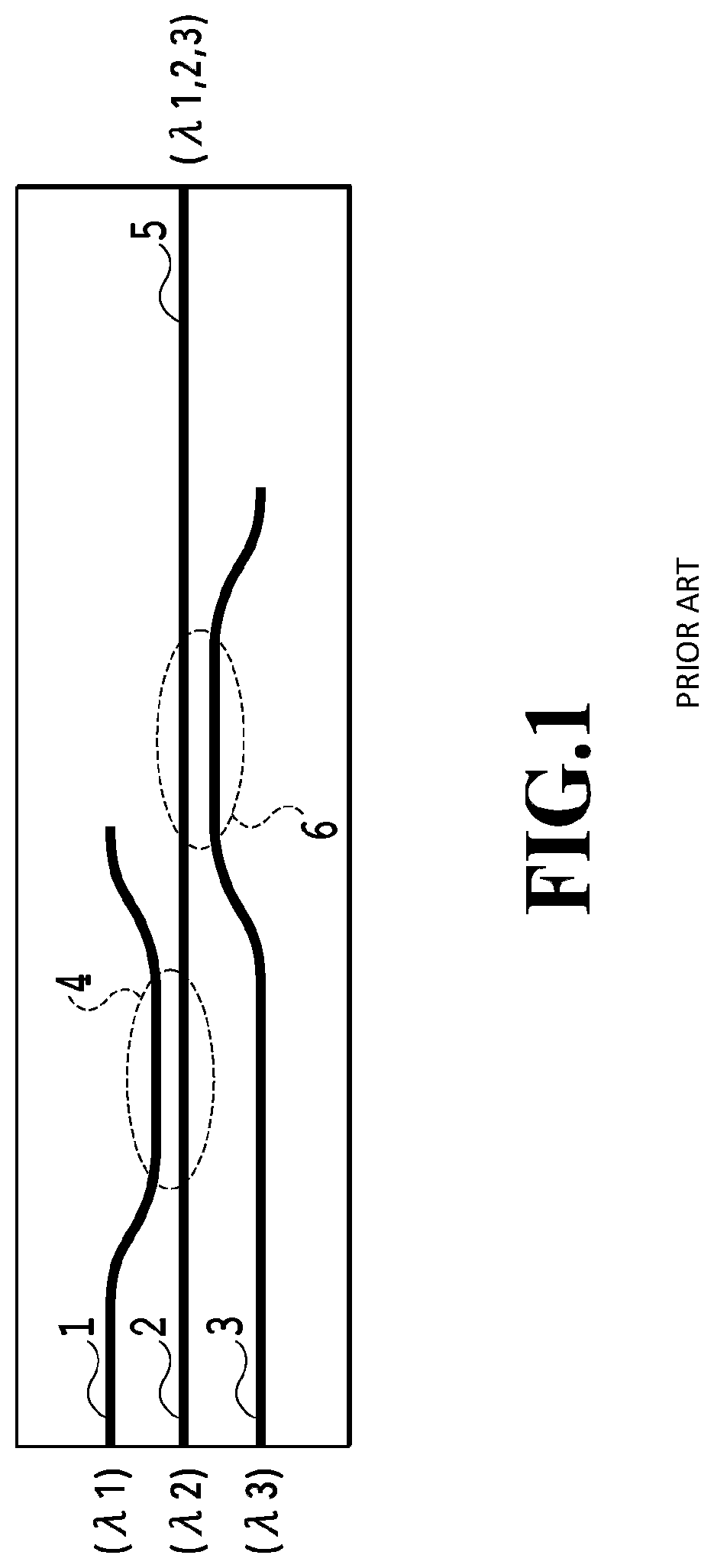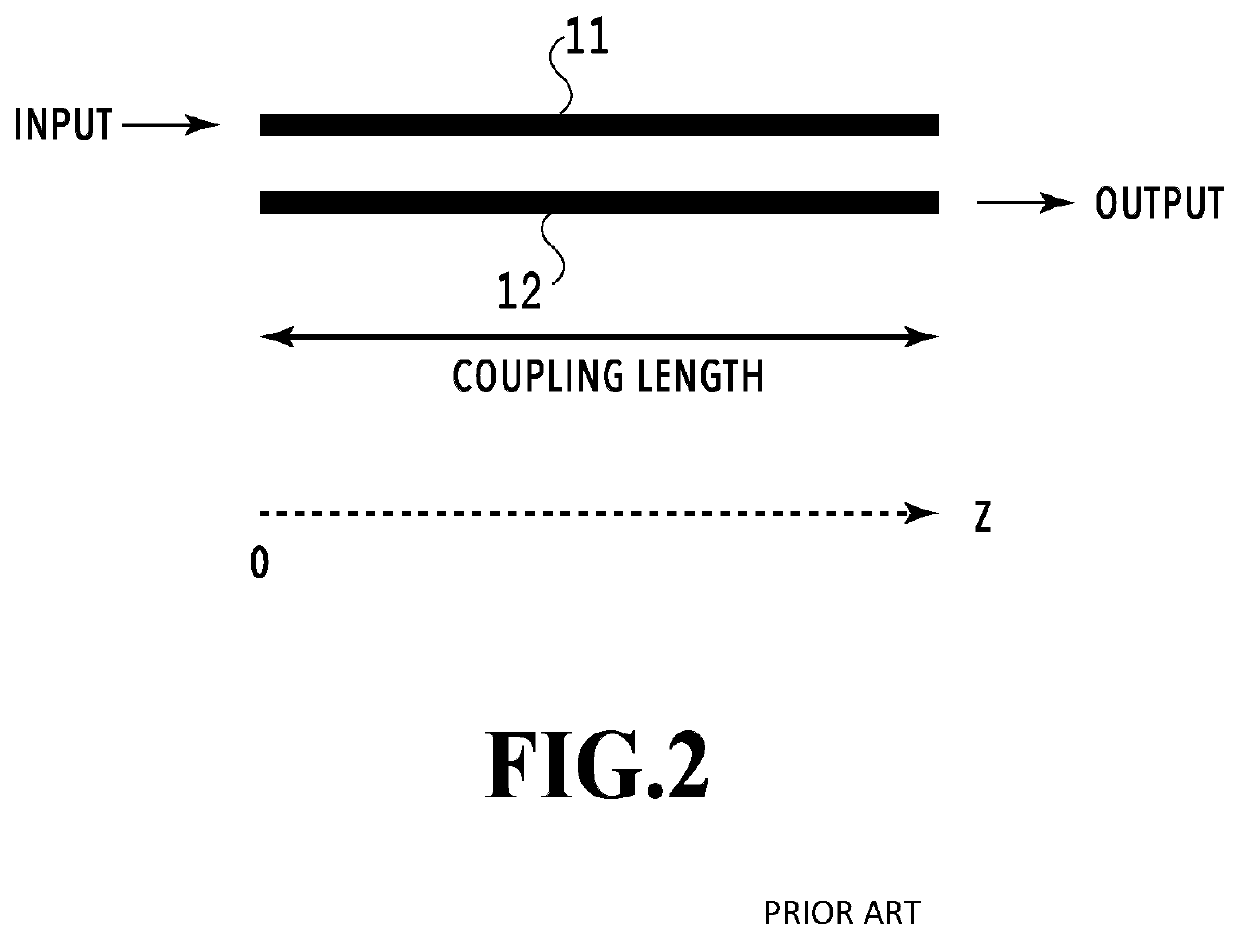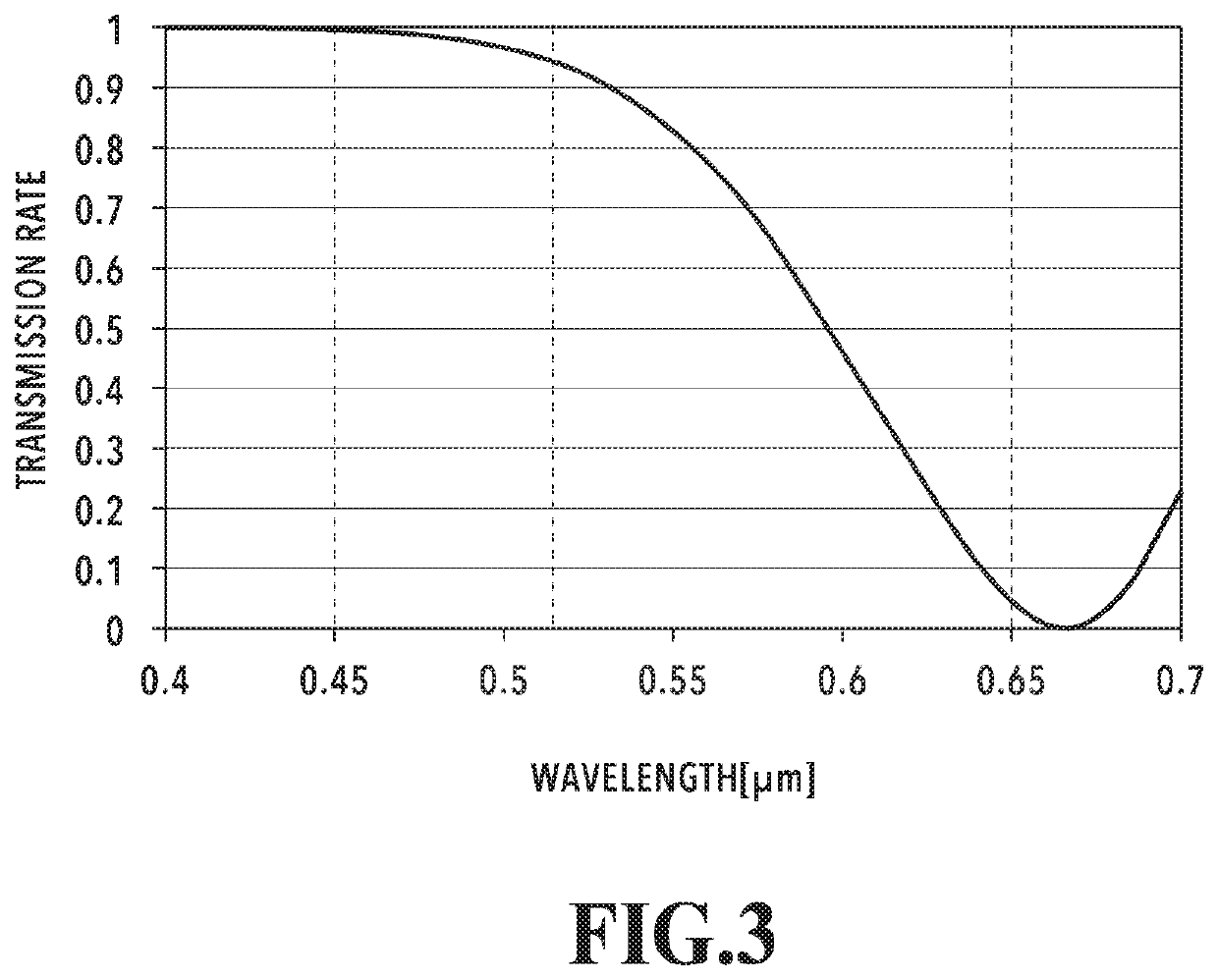Optical multiplexing circuit
a multiplexing circuit and optical technology, applied in the field of optical multiplexing circuits, can solve the problems of difficult to multiplex light beams with three or more wavelengths by using mmi, and achieve the effects of reducing the coupling length
- Summary
- Abstract
- Description
- Claims
- Application Information
AI Technical Summary
Benefits of technology
Problems solved by technology
Method used
Image
Examples
embodiment 1
[0033]An optical multiplexing circuit according to embodiment 1 of the present invention will be specifically described with reference to FIGS. 4 to 6. In this embodiment, light beams with wavelengths λ1, λ2, and λ3 are light beams with wavelengths in blue (400 to 495 nm), green (495 to 570 nm), and red (620 to 750 nm) wavelength bands, respectively.
[0034]FIG. 4 exemplarily illustrates the optical multiplexing circuit according to embodiment 1 of the present invention. FIG. 4 illustrates an optical multiplexing circuit including a first optical waveguide 101 in which the light beam with the wavelength λ3 is input, a second optical waveguide 102 in which the light beams with the wavelengths λ1 and λ2 are input, a multi-mode (MM) conversion waveguide 103, a first coupling part 104, a second coupling part 105, and an output waveguide 106 coupled to the second optical waveguide 102. Here, in this embodiment 1, description will be given of an example where the two light beams with the wa...
embodiment 2
[0047]An optical multiplexing circuit according to embodiment 2 of the present invention will be specifically described with reference to FIGS. 8 to 10. FIG. 8 is a diagram exemplarily illustrating the optical multiplexing circuit according to the embodiment of the present invention. FIG. 8 illustrates an optical multiplexing circuit including first to third waveguides 201 to 203, a multiplexing optical waveguide 204, first to third multiplexing parts 205 to 207, and an output waveguide 208 coupled to the multiplexing optical waveguide 204.
[0048]The first to third optical waveguide 201 to 203 and the multiplexing optical waveguide 204 are formed of a lower cladding layer provided on a substrate, a core layer higher in refractive index than the lower cladding layer, and an upper cladding layer provided on the core layer. The upper cladding layer is provided so as to surround the core layer. The first to third optical waveguides 201 to 203 can be single-mode waveguides. The multiplexi...
embodiment 3
[0065]An optical multiplexing circuit according to embodiment 3 of the present invention will be specifically described with reference to FIG. 11. In this embodiment 3, an optical multiplexing circuit will be discussed which has a function of coupling and multiplexing only light beams with desired wavelengths as in embodiment 1 and a function of multiplexing light beams with wavelengths in different waveguide modes to thereby output a multiplexed light beam with higher intensity as in embodiment 2.
[0066]FIG. 11 illustrates an optical multiplexing circuit including first to fifth optical waveguides 301 to 305 into which light beams with wavelengths λ1, λ2, λ3, λ2′ and λ3′ are input, respectively, first and second MM conversion waveguides 306 and 307, first to fourth coupling parts 308 to 311, first and second multiplexing parts 312 and 313, and an output waveguide 314 coupled to the first optical waveguide 301.
[0067]The first to fifth optical waveguides 301 to 305 and the first and s...
PUM
| Property | Measurement | Unit |
|---|---|---|
| refractive index | aaaaa | aaaaa |
| wavelength bands | aaaaa | aaaaa |
| wavelength bands | aaaaa | aaaaa |
Abstract
Description
Claims
Application Information
 Login to View More
Login to View More - R&D
- Intellectual Property
- Life Sciences
- Materials
- Tech Scout
- Unparalleled Data Quality
- Higher Quality Content
- 60% Fewer Hallucinations
Browse by: Latest US Patents, China's latest patents, Technical Efficacy Thesaurus, Application Domain, Technology Topic, Popular Technical Reports.
© 2025 PatSnap. All rights reserved.Legal|Privacy policy|Modern Slavery Act Transparency Statement|Sitemap|About US| Contact US: help@patsnap.com



